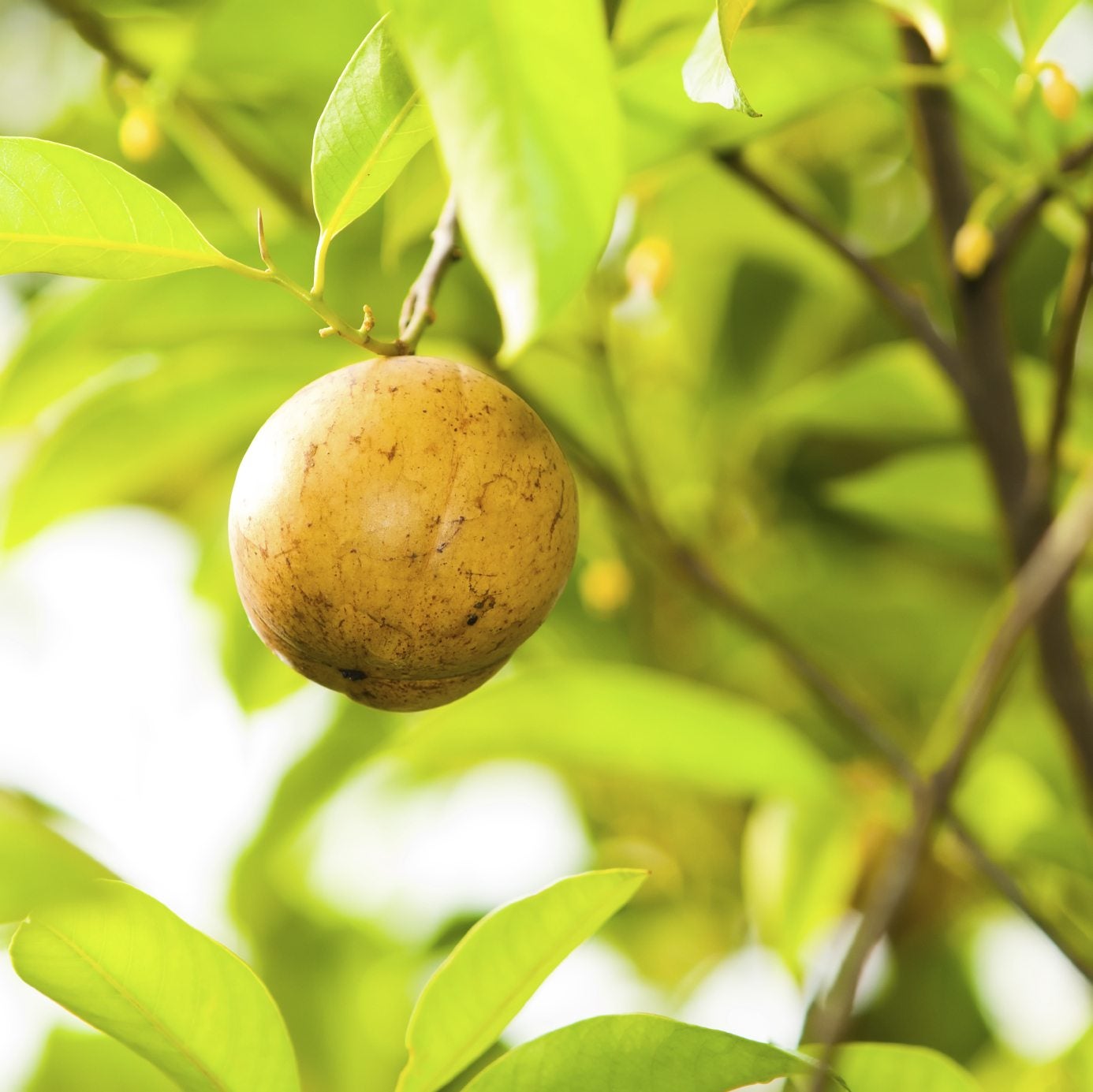Nutmeg Plant Info: Can You Grow Nutmeg

The smell of nutmeg would permeate my grandmother's entire house when she went on a holiday baking frenzy. Back then she used dried, pre-packaged nutmeg purchased from the grocers. Today, I use a rasp and grate my own and the powerful aroma still takes me back to Grandma's house, baking with her. Grating some nutmeg over a café latte one morning made me curious-- where does nutmeg come from, and can you grow your own nutmeg?
Where Does Nutmeg Come From?
Nutmeg trees are evergreens native to the Moluccas (Spice Islands) and other tropical islands of the East Indies. The large seed of these trees garners two noteworthy spices: nutmeg is the kernel of the seed when ground, while mace is the grated red to orange covering, or aril, which surrounds the seed.
Nutmeg Plant Info
Nutmeg (Myristica fragrans) is steeped in history, although there is no written record of it until 540 A.D. in Constantinople. Prior to the Crusades, mention of nutmeg's use is mentioned as having “fumigated” the streets, no doubt rendering them aromatic if not more sanitary. Columbus sought the spice when he landed in the West Indies but it was the Portuguese who first captured the nutmeg plantations of the Moluccas and controlled the distribution until the Dutch wrested control. The Dutch attempted to limit nutmeg production in order to create a monopoly and keep prices at astronomical rates. Nutmeg's history goes on and on as a powerful fiscal and political player. Today, most of the premium nutmeg spice comes from Grenada and Indonesia. Grated nutmeg spice is used to flavor everything from many desserts to cream sauces, in meat rubs, eggs, over veggies (like squash, carrots, cauliflower, spinach, and potatoes) as well as a dusting over morning coffee. Apparently, nutmeg has some hallucinatory properties, but the amount needed to ingest in order to experience such things would likely make you very sick. Interestingly, mace from the aril of the nutmeg is the stuff put in teargas as an eye irritant; hence, “to mace” someone means to teargas them. I've never seen one, but nutmeg plant info lists it as an evergreen, tropical tree with multiple stems that attains heights from between 30 to 60 feet (9-18 m.) tall. The tree has narrow, oval leaves and bears male or female yellow blossoms. The fruit is 2 inches (5 cm.) long covered by an outer husk, which splits apart when the fruit is ripened.
Can You Grow Nutmeg?
If you happen to live in the right place and can get your hands on one, you may have success with growing nutmeg spice. Nutmeg trees can grow in USDA zones 10 and 11. As a tropical tree, nutmeg likes it hot, in mostly sunny locations with some dappled shade. Choose a protected site if your area is prone to gusty winds. Nutmeg trees should be planted in rich, organic soil with a medium texture and low salinity. The pH level should be 6 to 7, although they will tolerate ranges from 5.5 to 7.5. A soil test will aid in determining if the site is appropriate or if you need to amend it to correct a lack of nutrients. Mix in organic matter like bark chips, rotted manure, or leaves to buck up the nutrition level and aid in aeration and water retention. Be sure to dig your hole at least 4 feet (1 m.) deep, as nutmegs do not like shallow roots. Nutmegs need well-draining soil, but they also like it humid and damp, so keep the tree moist. Drying out will stress the nutmeg. Mulching around the tree can aid in water retention, but don't pack it against the trunk or you may be inviting unwanted insects and opening the tree to diseases. Expect the tree to bear fruit between five and eight years of age for around 30 to 70 years. Once the tree flowers, fruit is ripe (indicated by the cracked husk) and ready for harvest between 150 and 180 days after planting and may produce up to 1,000 fruits annually.
Gardening tips, videos, info and more delivered right to your inbox!
Sign up for the Gardening Know How newsletter today and receive a free copy of our e-book "How to Grow Delicious Tomatoes".

Amy Grant has been gardening for 30 years and writing for 15. A professional chef and caterer, Amy's area of expertise is culinary gardening.
-
 8 Noteworthy Native Azaleas Every Gardener Should Know – And Grow!
8 Noteworthy Native Azaleas Every Gardener Should Know – And Grow!Native azaleas offer brilliant blooms in a range of colors and sizes. Here are a few favorites to get inspired and start working on a native shade garden!
-
 Growing Climbing Roses: How To Create Elegant Displays With Maximum Blooms
Growing Climbing Roses: How To Create Elegant Displays With Maximum BloomsMaster the art of growing stunning climbing roses with this essential guide to creating vibrant, fragrant walls and structures all summer long.